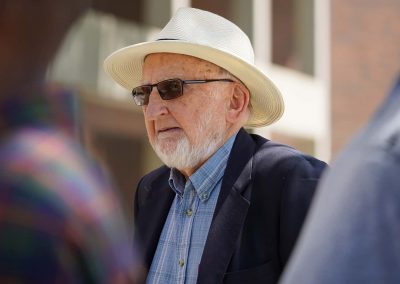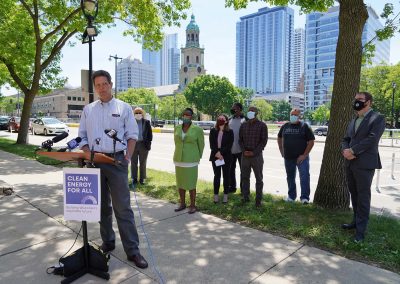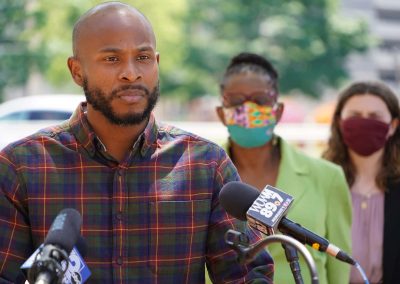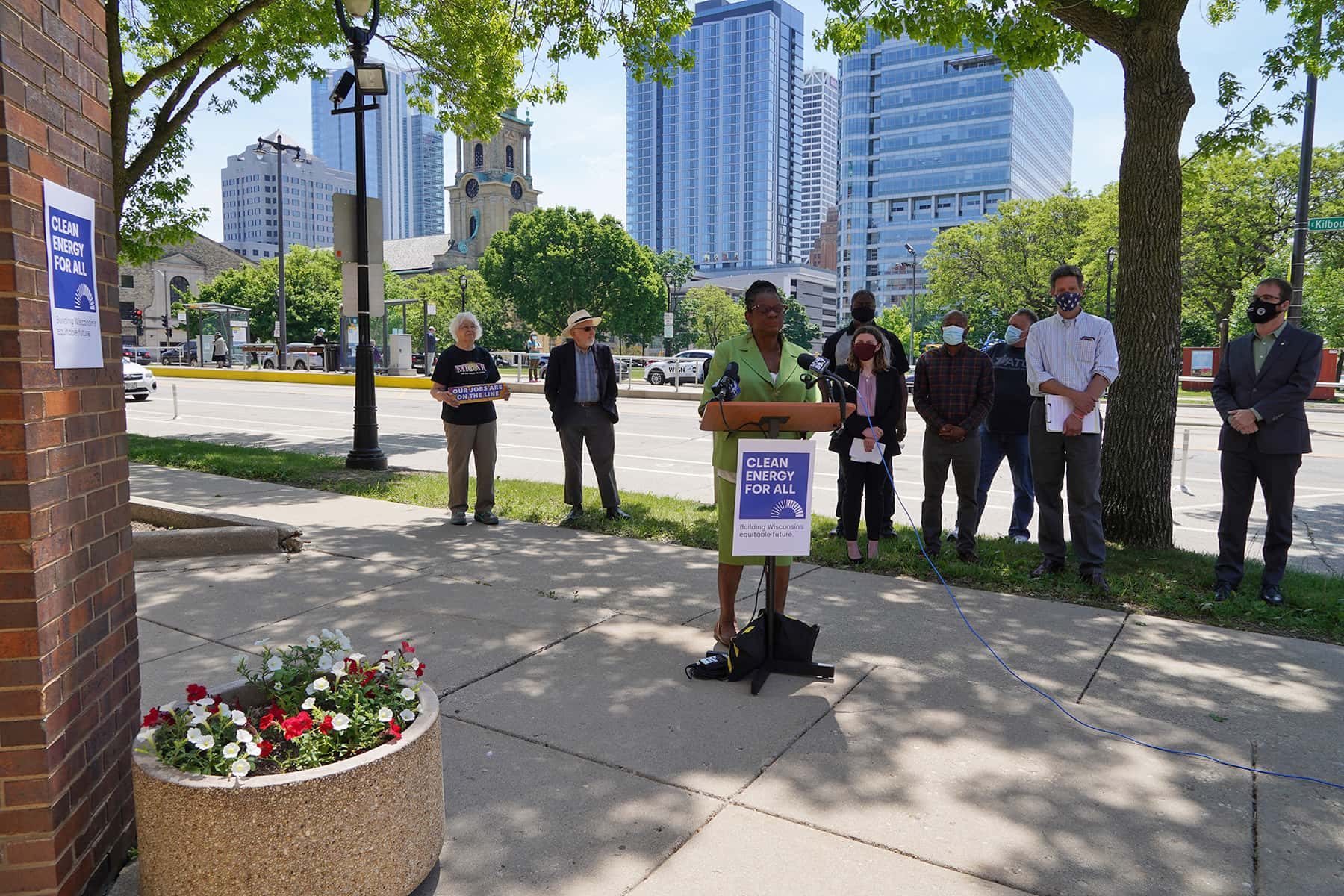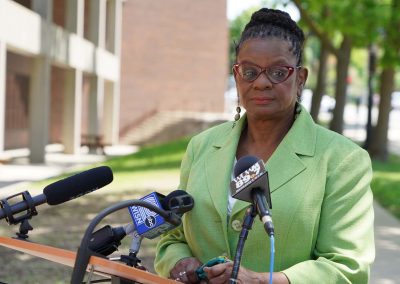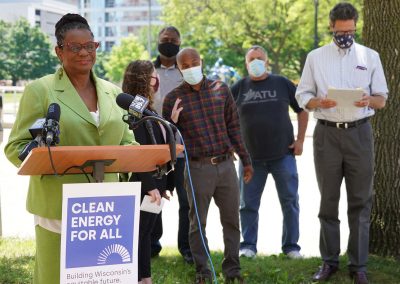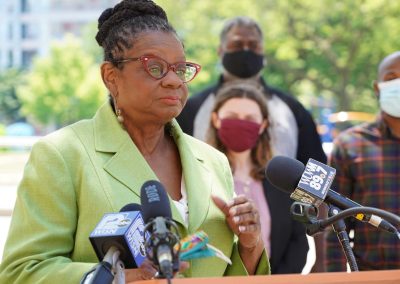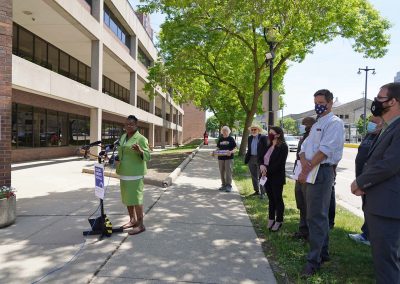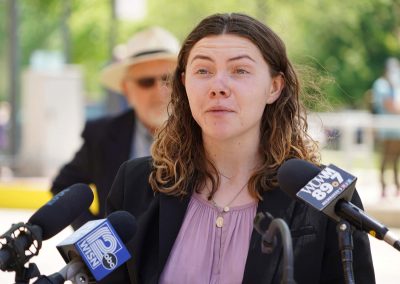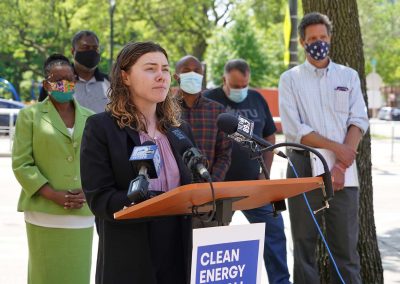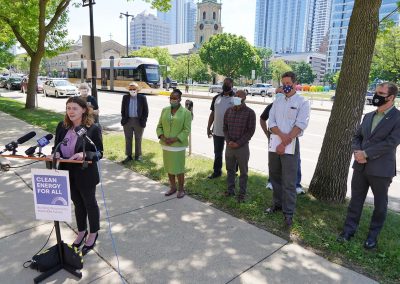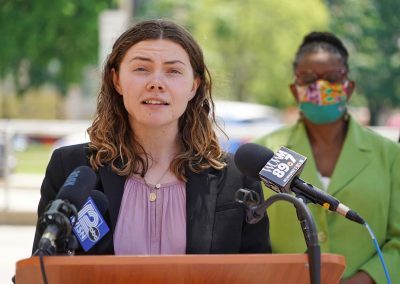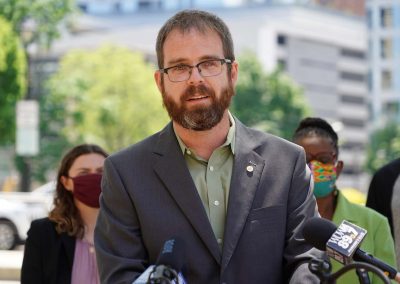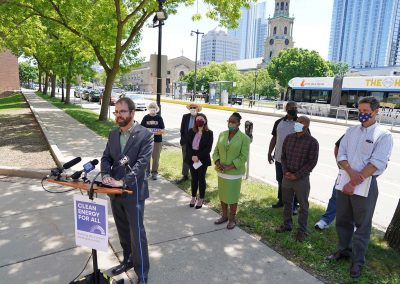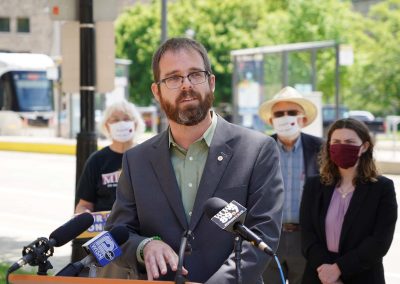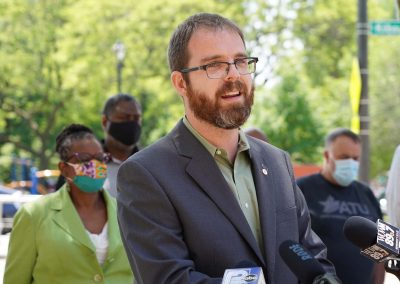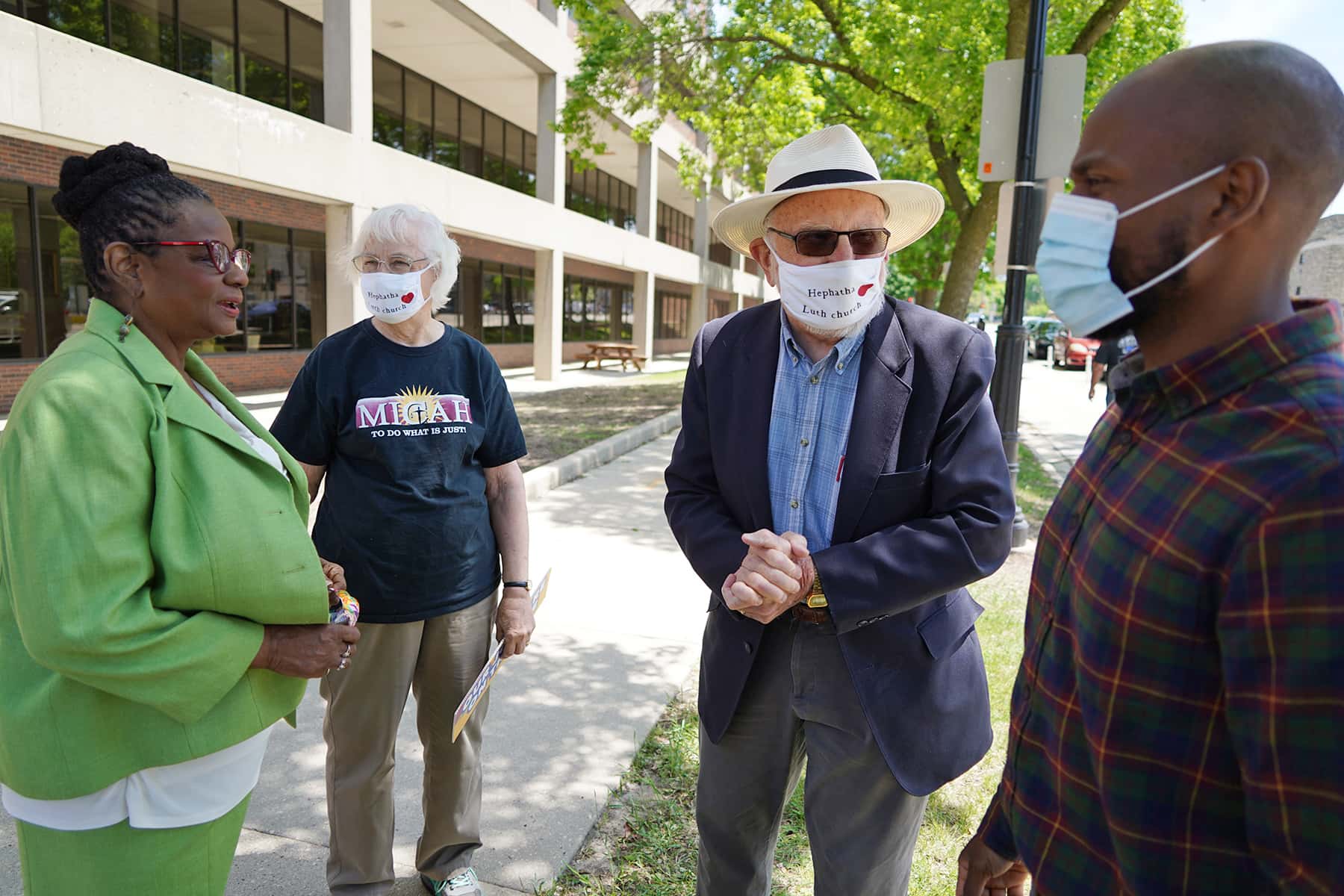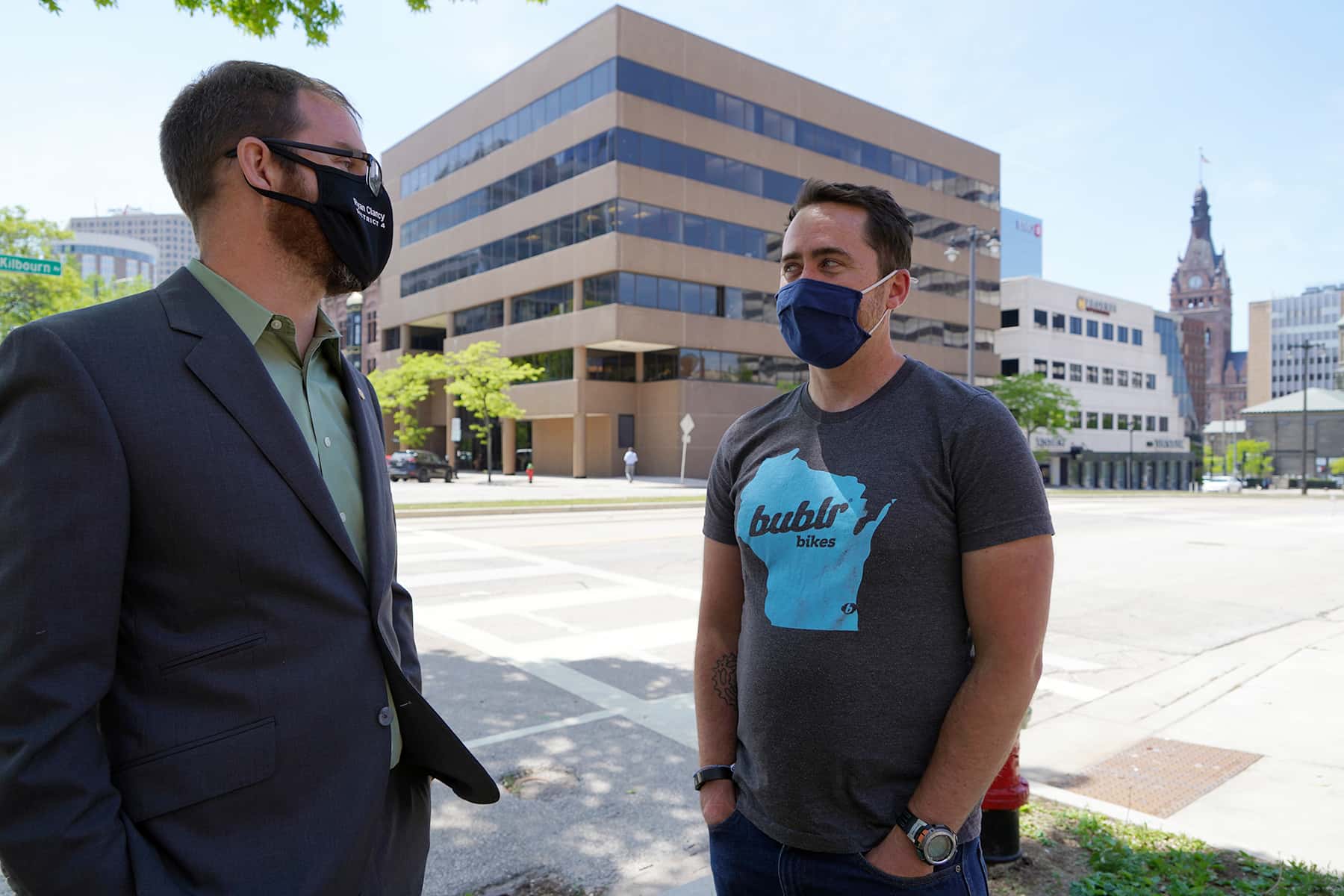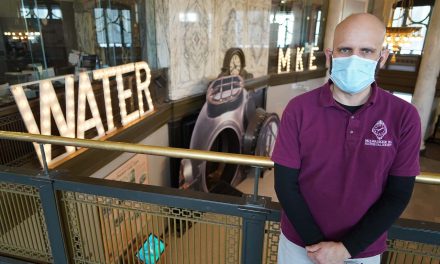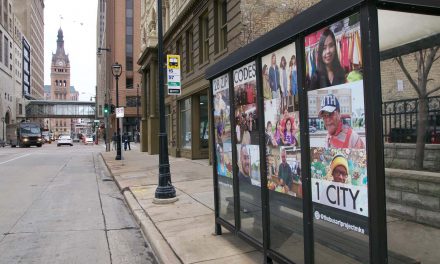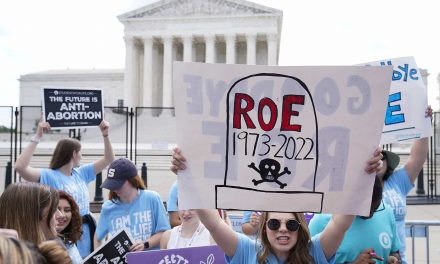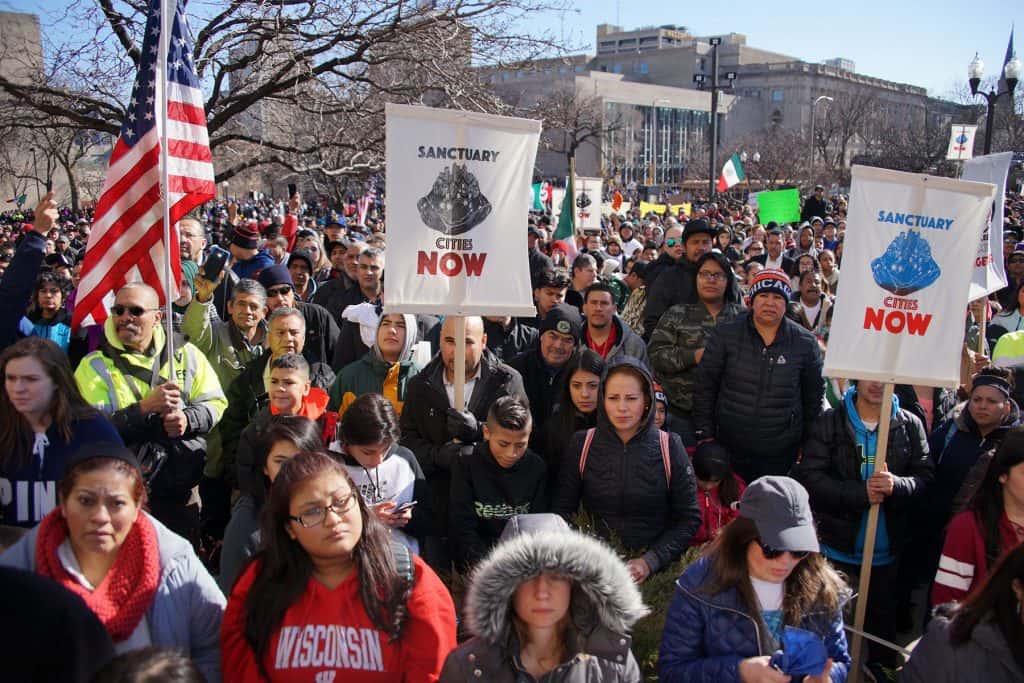
United States Representative Gwen Moore joined clean energy advocates, elected officials, labor organizations, and community members on June 2 to speak about her support of initiatives to increase energy efficiency in schools, clean energy buses, investments in Milwaukee’s BRT bus program, and the American Jobs Plan.
Outside of the Milwaukee School of Engineering’s Walter Schroeder Library, Representative Moore spoke about opportunities for committing to a clean energy future. She said that Milwaukee’s children deserved to be in environments that provided a proper ventilation to prevent the spread of diseases.
“Especially children in our low income inner city communities – what we have noticed is that those people who rely on our public transportation for work or for school is that if you’re a person of color you’re probably six times as likely to rely on bus service than if you’re not,” said Representative Moore.
She was also critical of her Republican colleagues who have rejected President Joe Biden’s infrastructure proposal, and actively worked to make life harder for Americans during the pandemic by trying to undo key elements of the financial rescue package.
Also speaking at the press conference were Ariana Hones, Southeast Organizer, Wisconsin Conservation Voters; Ryan Clancy, Milwaukee County Board Supervisor and owner of Bounce MKE; Ted Kraig, member of the Milwaukee City/County Task Force on Climate Change and Economic Equity; Richard Diaz, BlueGreen Alliance; and Donnell Shorter, Amalgamated Transit Union Local 998, Executive Board Member.
Hones called on congress to invest at least 50 billion dollars in the adoption of electric buses for transit and school bus fleets.
“Electrifying transit and school busses will not only boost the emerging electric bus industry, these vehicles have no tailpipe emissions and will thus protect the health of drivers, riders, and people who live along the routes,” said Hones.
Even though Clancy is a Milwaukee County Board Supervisor and small business owner, he spoke as a father and a husband on his experience with using clean energy.
“In 2011 we got our first electric vehicle and it was in large part because our child who is now 12 has asthma. It’s triggered by a particulate matter in the air and we knew that getting an electric vehicle was a small way of making a small contribution to changing that impact on our environment,” said County Supervisor Clancy.
In April, President Biden said that the United States needed to ramp up production of electric vehicles to catch and surpass China, after he virtually toured an electric bus and battery manufacturing plant. Automakers in China sold about 1.3 million passenger EVs in 2020 compared with 328,000 in the United States.
President Biden has proposed spending $174 billion to boost the production and sale of zero-emission buses and cars, and increase EV charging stations – including $100 billion in consumer rebates. The White House’s push to electrify vehicles came as a reaction to progress from China, which has dominated the world electric bus market.
“Some of the benefits of electric buses would be that our drivers wouldn’t have to walk to a warehouse of a hundred buses with diesel smoke in the air,” said Shorter. “Our maintenance department is ready for the challenge of electric buses and the new technology they bring.”
Governor Tony Evers included more than $29 million for workforce development initiatives in his 2021-23 budget for Wisconsin, with $1 million set aside specifically to train workers in green jobs. The provision was designed to help alleviate the shortage of trained workers in the state’s rapidly growing clean energy industry.
“The other end of this, which is really important for Milwaukee, is that the investments that we need to make to solve the climate problem are investments that will create jobs and economic prosperity,” said Kraig. “Especially if we do it right, they can rectify some of the horrific racial injustice and racial inequality that we’ve had in our metro area for quite a long time.”
The development of clean energy projects not only creates thousands of good paying jobs, but it keeps millions of local energy dollars right in Milwaukee. Economic projections show that the need for renewable energy workers is expected to continue growing at a rapid pace.
“Milwaukee is a different town than it was 50 years ago, when we had big manufacturing giants employing thousands of Milwaukeeans,” said Diaz. “You didn’t see people gravitating towards employment that weren’t livable wage jobs, because the opportunity to earn a honest dollar and to have a path to upward mobility was so accessible. The American Jobs Plan provides that opportunity for us as people of color, as working class people across the nation to have that path to upward mobility.”
© Photo
Lee Matz

